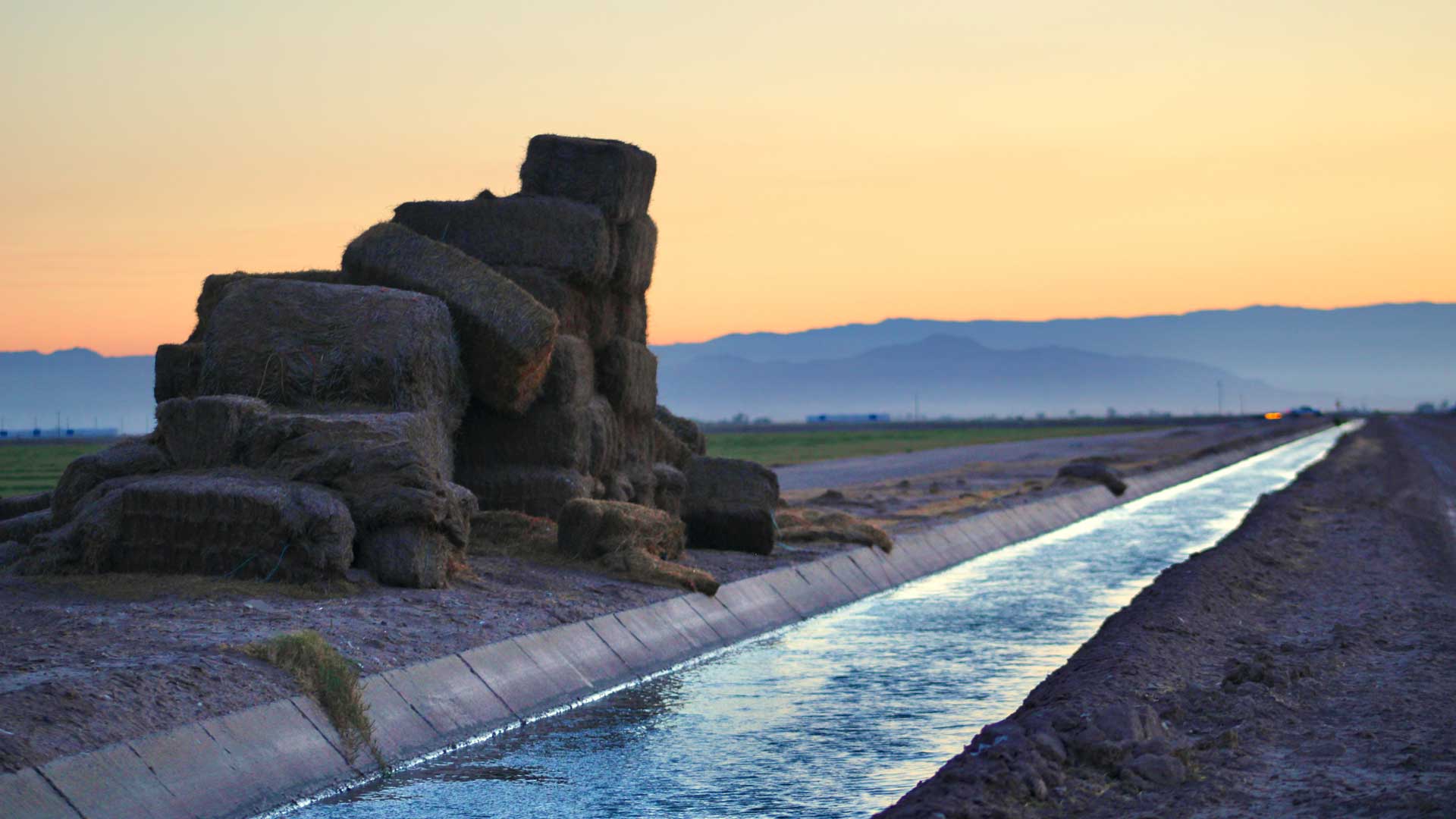 Stacks of hay bales sit beside an irrigation canal in Imperial Valley on June 20, 2023. Critics have called for reductions to the amount of alfalfa grown with Colorado River water. The particularly thirsty crop is mostly used for cattle feed.
Stacks of hay bales sit beside an irrigation canal in Imperial Valley on June 20, 2023. Critics have called for reductions to the amount of alfalfa grown with Colorado River water. The particularly thirsty crop is mostly used for cattle feed.
The Buzz for December 22, 2023

It's no secret that agriculture is the largest consumer of water. 72% of all water consumed goes to farms and ranches, while 22% goes to municipal use and 6% to industry.
Much of that water consumption comes from the state's allocation of Colorado River water, which feeds farms in Yuma and Pinal counties.
As Arizona and other states that use a share of the Colorado River talk about who loses some of their share due to shrinking reservoirs, one place many are asking is California's Imperial Valley, which sits on the western shore of the river.
One expert says the issues faced in that region are similar to those faced by Arizona's agricultural sector because of their proximity.
"A lot of the farmers in Imperial Valley also farm in Yuma. [Imperial Valley residents] go shopping in Yuma, and we play football against Yuma." said Celeste Cantú, who represents the Imperial Valley and San Diego regions in the California Water Boards. "There's been lots of changes [for all farmers in the area]. When I think of my father's generation versus the next generation, how they farm is pretty radically different."
She said for many in that area, flood irrigation is a practice of the past, giving way to more water-conscious techniques.
The fact that such practices have changed on both sides of the Arizona/California state line shows that political boundaries should not be the guiding principal, Cantú said, and that Colorado River water would be better managed by changing how we think of it.
"Historically, we've kind of managed water as if it were gasoline. You buy it and then you have a distribution system and you deliver, and then you use it up. In fact, the water we have on this world is all the water we've ever had, it's just recirculating. So if we start to think about managing water understanding that it is infinite and it recirculates, then we realize what we really need to worry about is the pollution that renders it not available for its next use. And then figure out what the good housekeeping is that either removes those pollutants or how to take it out."
She gave an example of efforts to combat salinity that comes from people and cattle farms in the Colorado's northern stretches, and how if that water were less salty, farmers downstream would not have to supplement with cleaner water sources, thus using less water.
We finish this week's episode by returning to Tapped, AZPM's podcast about water and how we use it. This popular episode takes a look at why Arizona's most popular crop is one of the thirstiest options to farmers, alfalfa.


By submitting your comments, you hereby give AZPM the right to post your comments and potentially use them in any other form of media operated by this institution.